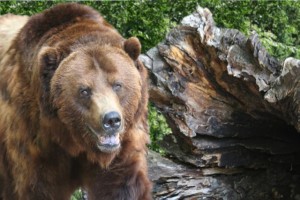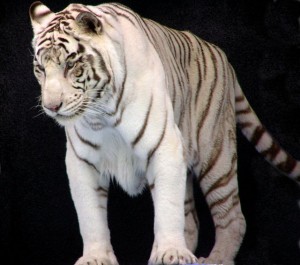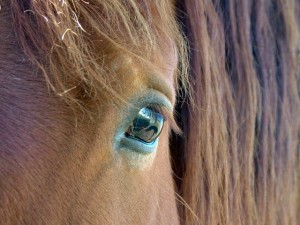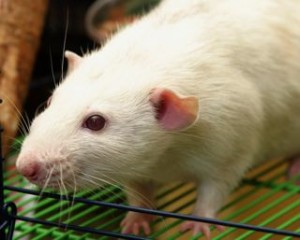First of all, you may be wondering, what is pet therapy, or animal-assisted therapy? It is any kind of therapy that includes the addition of a pet to further facilitate healing. There are many, many organizations that include pets as part of the therapy team such as hospitals, youth centers, and nursing homes, and most of them work with agencies that certify the animals such as Therapy Dogs International, the Equine Assisted Growth And Learning Association (EAGALA), and the Delta Society to name a few.
The field of pets as therapists is really expanding, for example dogs can be trained to smell cancer and other forms of tumors and recently Psychiatric Service Dog Society, a newly formed organization to focus specifically on how dogs can support the mental health of humans, has worked with dogs trained to alert their owners to hypomanic episodes (the symptom experienced by people with bipolar illness that is the opposite of the depression and can have serious consequences).
Studies have been done to show that interaction with a pet can alleviate anxiety, increase survival rates for heart attack victims, reduce blood pressure, and increase self-esteem (I read this in Marc Bekoff’s, The Emotional Lives of Animals, but these studies are widely available).
As you have likely experienced, there is a lot happening in the field of interaction, or “Space” as I discussed in my last blog, between you and the animal, and in my opinion there are probably lots of connections occurring between the right-brains (that part of the brain that processes nonverbal communication among others things) of each. continue reading »
With all this talk of Spring Cleaning, I just would rather hibernate. I think bears have a good idea to skip the whole winter wonderland and just sleep for months at a time. Can you imagine eating so much that you wouldn’t need to eat for a few MONTHS? What an amazing process.
In some sense, the bear’s symbol is related to Artemis, the Goddess of the Moon. As such, the bear is associated with lunar qualities, and as a result of its magnificent strength and lethal capabilities, Carl Jung connects the symbol of the bear with the dangerous side of the unconscious. Note: these symbol associations are from the Penguin Dictionary of Symbols. continue reading »
 I have recently started reading the book: Shambhala: The Sacred Path of the Warrior, described as a “practical guide for enlightened living.” In it, author Trungpa talks about breaking old habitual patterns. He says that calling someone a toranoko- a Japanese term for tiger cub, used pejoratively is saying this “you mean that he is a paper tiger, someone who appears brave but is actually a coward.” And Trungpa then makes the declaration, “That is the description of clinging to habitual patterns.”
I have recently started reading the book: Shambhala: The Sacred Path of the Warrior, described as a “practical guide for enlightened living.” In it, author Trungpa talks about breaking old habitual patterns. He says that calling someone a toranoko- a Japanese term for tiger cub, used pejoratively is saying this “you mean that he is a paper tiger, someone who appears brave but is actually a coward.” And Trungpa then makes the declaration, “That is the description of clinging to habitual patterns.”
Likely, most of us aspire to be more like real, living tigers rather than paper ones, so why all the focus on not clinging to habitual patterns?
Thinking about what a habitual pattern is, I realized there is a neurological aspect occurring simultaneous to the display of the habit. In our brains, after we pass the age of three, we are mature enough to start making neural connections based on experience. Up to that point, our Limbic System is primarily driving our behavior. The Limbic System encompasses the functions we share with the animal kingdom, including such things as our “fight or flight” responses, our capacity for infatuation, as well as our process to store memories as pictures (as we mature we include narrative with memory). continue reading »
As the month of February takes off…the topic of connection is at hand. But, how about going beyond our connection to each other, and exploring our connection to the animal realm? Winston Churchill once said, “There is something about the outside of a horse that is good for the inside of a (hu)man.” What is it about this quote that seems to resonate with people who spend time with horses, either for work or pleasure purposes?
The emerging field of Equine Assisted Psychotherapy is proceeding, whether or not the answer to the above question is clear. EAP is psychotherapy with the addition of a horse, or in some cases a group of horses. In an EAP session, there is a participant, a psychotherapist, a horse specialist, and a horse. The participant interacts with the horse with the support of the psychotherapist, and the assistance and safety assurance of the horse specialist. The incorporation of horses into therapy provides an experiential opportunity for healing that goes beyond traditional methods. Both the psychotherapist and horse specialist must have specific training in EAP. Since its founding in 1999, the Equine Assisted Growth and Learning Association, an international non-profit providing EAP training, has granted over 3,000 certifications.
What’s going on here?
The unique human connection to horses is documented as far back as ancient Greece, by Greek historian and philosophical essayist, Xenophon. Born in Athens around 430 B.C.E. Xenophon was studying the way the relationship between horse and rider can be an expression of the archetype of Beauty. In her book, Dressage in the Fourth Dimension, author Sherry Ackerman, explains Xenophon’s view this way, “The ancient teaching held that Beauty was expressed by harmony which was born of perfect balance. The body, mind and spirit of the rider were to attain this integrated state of balance…a harmonious partnership between horse and rider, which expressed itself in Beauty.”
continue reading »
 Often the way we feel about a particular person is reflective of what that person represents within us. That is to say, if there is something we do not like about someone else, it may represent a shadow nature that we, ourselves,possess. This is Carl Jung‘s classic idea of shadow projection, and a premise of depth psychology. We hear the terms in today’s vernacular, “…maybe I’m projecting, but I feel as though…” or “That’s his shadow, he doesn’t see how his actions are affecting me.”
Often the way we feel about a particular person is reflective of what that person represents within us. That is to say, if there is something we do not like about someone else, it may represent a shadow nature that we, ourselves,possess. This is Carl Jung‘s classic idea of shadow projection, and a premise of depth psychology. We hear the terms in today’s vernacular, “…maybe I’m projecting, but I feel as though…” or “That’s his shadow, he doesn’t see how his actions are affecting me.”
Similarly, we can view our relationship to a group, say animals, as reflective of what they represent within us.
Recently, I attended a book signing by author Marc Bekoff, who wrote a book I like called, The Emotional Lives of Animals. In it, Bekoff discusses the unfortunate view of science that laboratory animals do not possess emotions thus they do not experience the suffering of scientific testing. In fact, although it is supposed to be in place for their protection, the Animal Welfare Act excludes rats bred for research from the definition of “animal” for scientific needs.
continue reading »




